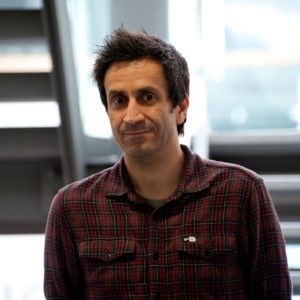RESEARCH SPOTLIGHT: Chris Jones, PhD

Dr. Chris Jones
Professor of Childhood Brain Tumour Biology
1. Where are you from?/Where did you study?
I was born in the UK but spent the first 12 years of my life in Perth, Western Australia. I spent a year in high school in Houston, Texas, and another 12 month research placement in Basel, Switzerland, but did all of my undergraduate and postgraduate studies in London, where I have remained ever since.
2. What are you researching right now?
Our lab focuses on paediatric high grade glioma and DIPG. We have a long history in molecular pathology and genomics, but also spend a lot of time developing new models and carrying out preclinical testing of novel agents. More recently we have become very interested in intratumoral heterogeneity, and the interactions between different subpopulations of pHGG/DIPG cells.
3. Who is your all-time favorite scientist and why?
Mary Anning. She made major discoveries of prehistoric fossils in the early 1800s, including the first ichthyosaur skeleton, but was given little credit at the time. It is still a joy finding fossils where she did in the cliffs around Lyme Regis.
4. What do you like to do in your spare time?
I ‘enjoy’ running marathons, or at least I enjoy the beers afterwards. I listen to a lot of new music. I am gamely attempting to learn Japanese. But mostly I am watching “Twin Peaks: The Return” over and over again.
5. Favorite food?
Sushi. And sausage rolls. And Cherry Ripe bars.
6. Why science?
For science in general, it is all about the joy of figuring things out. For childhood brain tumour research in particular, it is the extraordinary brilliance and dedication of the people who work in this area, and the great privilege I have to work with them every day. I feel that there is no problem we cannot solve by coming together, sharing ideas and attacking the task in hand.
7. Who/What has inspired you to work on DIPG?
When I set up my lab in a department of paediatric oncology, I knew very little about childhood cancer, but I knew there were some great success stories across multiple types of tumour. When I learnt about DIPG, it was clear this was not the case, and I knew that this is where I could try to make the most impact. Meeting so many families devastated by this disease inspires me every day to continue to do so.
8. What are you reading right now?
‘Wolf in White Van’ by John Darnielle.
9. If you could give one piece of advice to someone considering a research career, what would it be?
I’ll quote David Lynch – “It’s crucial to have a setup, so that, at any given moment, when you get an idea, you have the place and the tools to make it happen.”
